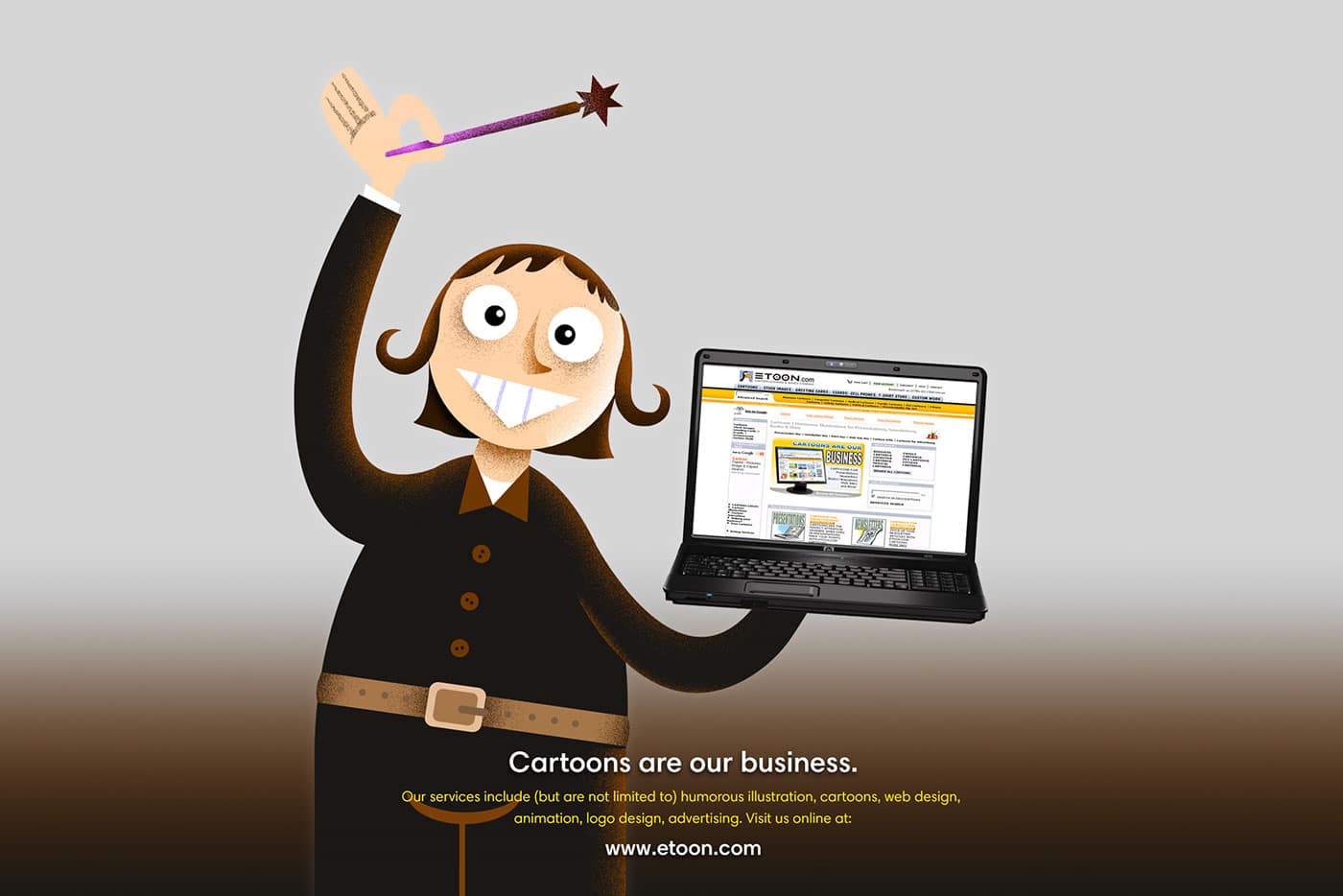Designer Spotlight: Vlad Kolarov
Layers: So what’s it like to be the person who introduced the comic strip format to an entire country?
Kolarov: Well, I’m still waiting for the announcement of Vlad Kolarov’s Comic Strip Day, but I have a funny feeling it’s not going to happen this year—again. Seriously though, I had a blast drawing those comic strips. Birdie was an experiment. It appeared in the first Bulgarian afternoon daily newspaper with the same title (Vrabetz). I created the characters and then together with another artist did it every day for a year—until the paper went bankrupt. Because it proved to be popular, I was given the chance to make a new comic strip for the largest Bulgarian newspaper, 24 hours. I came up with Phil the Cat, a strip about a cat (surprise!), a dog, and a parrot. Unfortunately, there was a creative conflict with the editors, so it got canceled about a year and a half later.
Layers: You’ve been working as a professional illustrator for more than 20 years. Can you describe your transition from pen and paper to computer and software?
Kolarov: Wow! 20 years? Time really flies, doesn’t it? I went digital in 1998, and I found it to be quite a natural transition. After all, the computer is just another tool to help the artist work faster. And I like that, as it gives me more freedom to experiment. I do my drawing on a Wacom tablet, and use mainly Photoshop, Illustrator, Flash, Painter, and SketchBook Pro. I still work with pen and paper, only because I can, not because I have to.
Layers: How would you describe your style as a cartoonist?
Kolarov: Funny, I hope. Cartooning as an art form is quite flexible, but what really matters is whether you can make your audience smile. I come from Europe and have been heavily influenced by that type of humor, but as a teenager I discovered Peanuts, Calvin and Hobbes, and The Far Side, which opened my eyes to a whole new cartoon universe. I’m extremely grateful to artists like Lynn Johnston, Jim Unger, and Charles Schultz, who wrote encouraging letters to that 20-something-year-old kid in faraway Bulgaria.
Layers: Can you tell us a little more about your various websites?
Kolarov: I fell in love with the Internet the moment I heard about it. I saw the potential of being silly in front of a computer and having millions of people laugh at you before YouTube came around. That’s why I decided to make different websites like eToon.com and 2ecards.com, a free ecard service. GoodLuckPuppy.com showcases the charming character I came up with, and SafeJungle.com is designed as an online playground for kids. Some are successful, some are not. Others like EggPeople.com are still ideas which need funding—but that’s the name of the game, right?
Layers: How hard is it to make people laugh these days? And how hard is it to find inspiration?
Kolarov: People will always laugh at what’s funny. The amazing power that humor has is that it gives an artist the chance to reflect or comment on a subject in a unique way. That’s why it can always be fresh and diverse. I find inspiration the easy part—the hard part is work. But the funny thing is: the more you work, the more inspired you are.
Layers: Your online portfolio is pretty diverse: kids’ illustrations, greeting cards, logos, comic strips, etc. Do you have any advice for aspiring cartoonists?
Kolarov: One year after I moved to Canada, I had landed one large client, a New York-based website for which I was making animated ecards, as well as several small Web clients. But when the Internet bubble burst, all my clients suddenly disappeared. It took more than a year to get back on my feet and build a new clientele, but this time it was really diverse. The life of a freelancer is a nonstop roller coaster, so you have to be prepared for the ups and downs and always have a “throw up” bag close by. If you know that you want to be a cartoonist, that means you’re already infected by the cartoon virus, but to be a successful one, you need to work hard, learn new skills, read, and market yourself 24/7.










